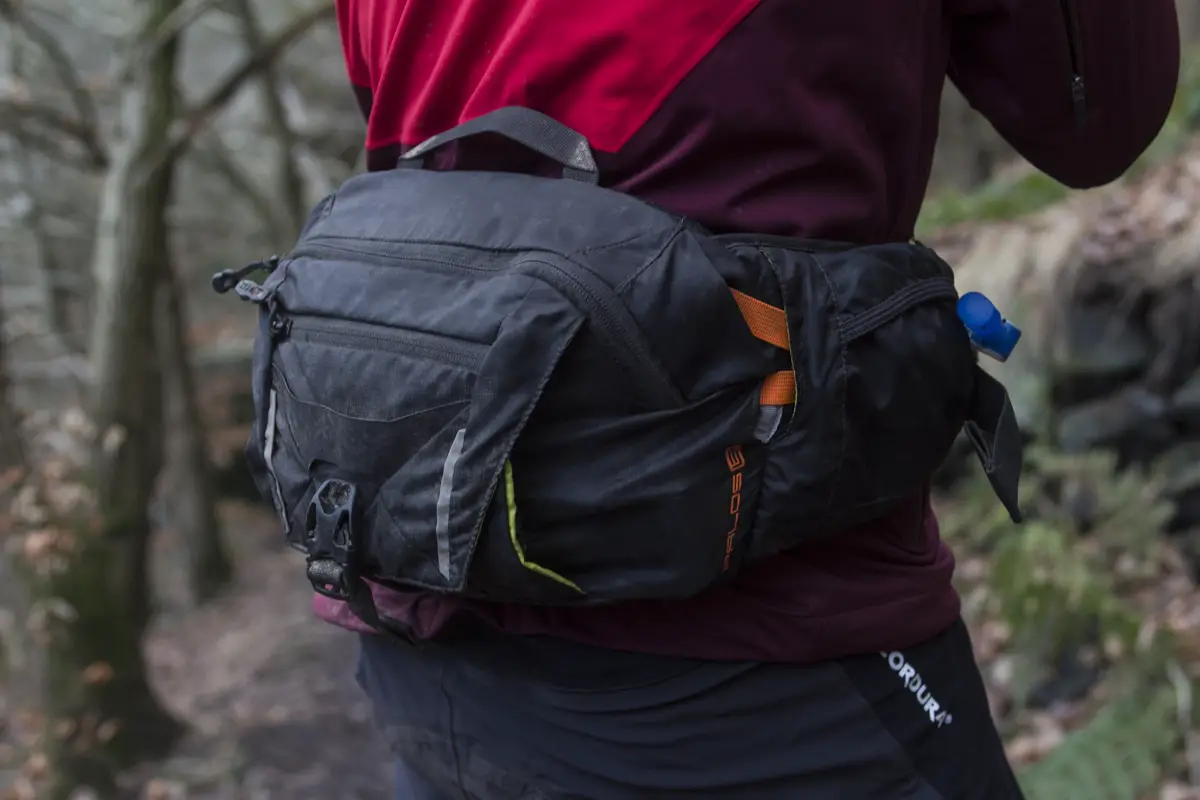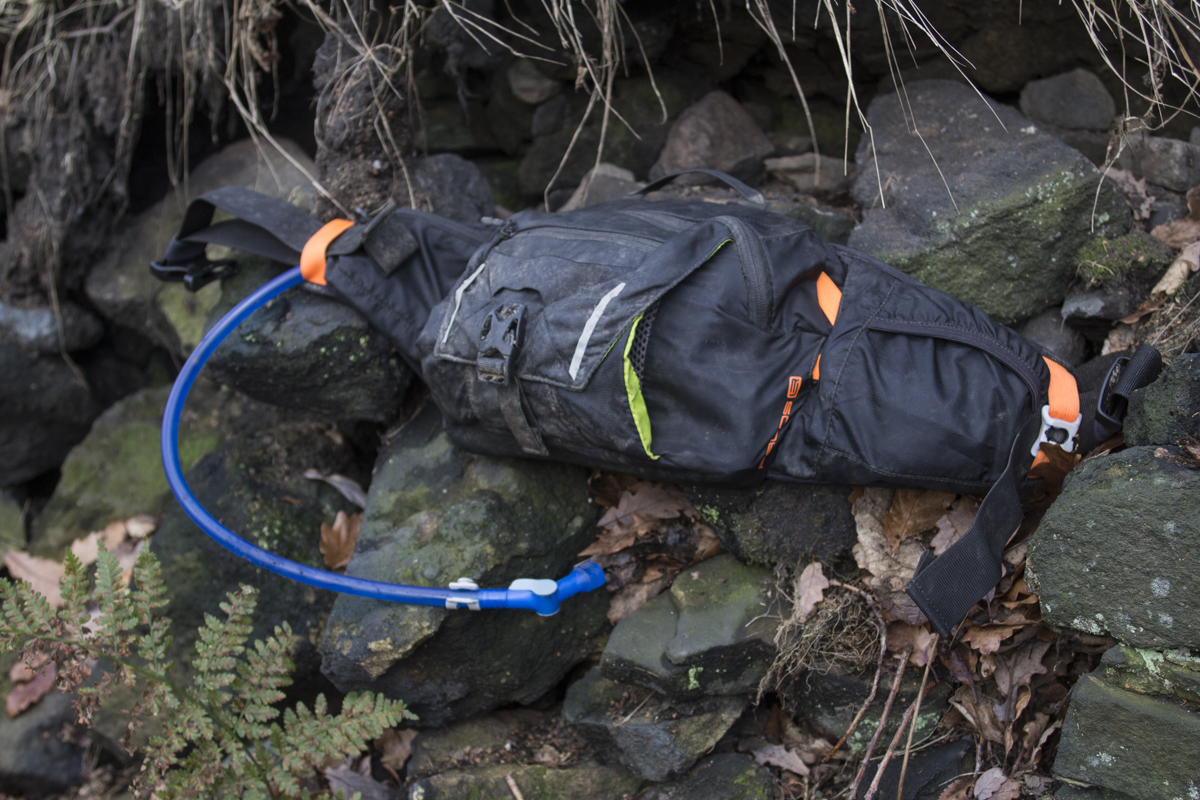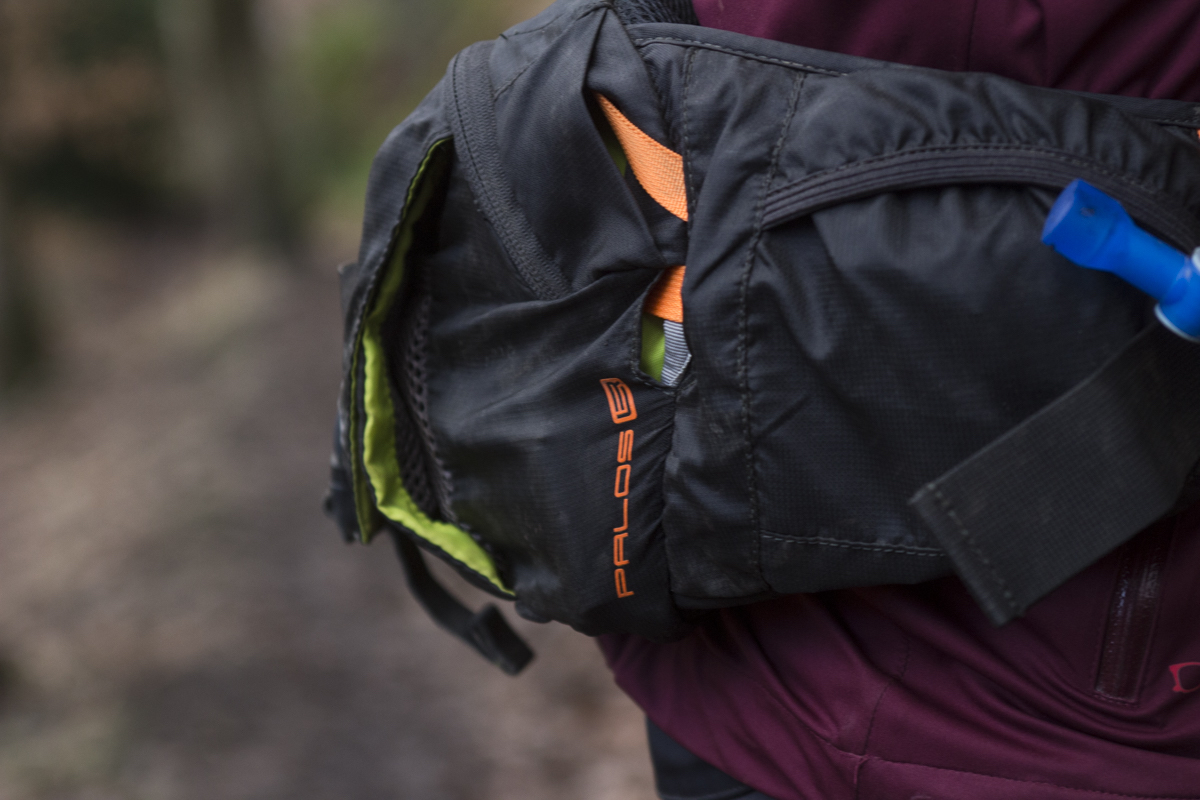Much like Total Recall and Banarama, bum bags are officially back on the scene. Although bum bags (or ‘fanny packs’, if you will) are widely known to many as a portage solution that should have remained in the archives of the previous century (perhaps like Total Recall and Banarama), it turns out that they’ve evolved into a pretty handy tool for mountain bikers. For those wanting to carry water and the bare essentials on their ride, a bum bag presents a viable alternative to wearing a full-size backpack or stuffing the pockets full on a tight-fitting Lycra jersey.

I must admit that I was a latecomer to the world of off-road bum bags. Wary of any hyped-up fashion trends that emerge from the enduro sphere, I can’t say that I was entirely convinced about taping tubes and gels to my frame, and I certainly wasn’t convinced by the idea of wearing a large, tight waist belt loaded up with all the gear that would otherwise be supported by a set of shoulder straps. After all, I wear bib tights to eliminate uncomfortable elastic bands around my belly, and I’ve never really taken an issue with wearing regular packs anyway – so why would I want to use a bum bag?
I will point out that I’ve briefly flirted with a Camelbak Palos bum bag before. Originally released back in 2015, the Palos debuted as Camelbak’s first waist-mounted hip pack to rival those from the likes of Dakine and EVOC. I only rode with that prototype Palos half a dozen times until I got tired of it’s self-loosening waist belt that required too many frustrating strap adjustments on the trail. So I wouldn’t say I was a big fan of the concept early on. Since the debut of the original Palos pack though, Camelbak has updated it with thicker straps that are designed to remain more secure on your hips. Following this update, Camelbak sent us out a couple of the new Palos LR packs to test out and see whether they are indeed worth of their fashionable comeback.

“The Palos™ 4 is the industry’s first reservoir-based waist pack designed specifically for mountain biking. It’s the ideal option for hard-charging riders who need more than a water bottle, but who don’t want to carry a full backpack” – From Camelbak.
Camelbak Palos LR 4 Features
- Low Rider (LR) waist pack
- 2.5L storage space
- 110/210D Nylon construction
- Integrated tool roll
- Separate waist pockets
- Adjustable waist belt (66-116cm adjustment range)
- Breathable mesh padded backing
- 1.5L Crux LR reservoir
- Magnetic TubeTrap valve attachment
- Claimed weight: 380g
- Colours: Black/Laser Orange & Atomic Blue/Sulphur Springs
- RRP: £74.99

First off, and the Camelbak Palos has loads of storage space for a little waist pack. The ‘4’ in the name refers to the total amount of storage volume and hydration volume in the Palos, with the 4 litres being made up by a 1.5L bladder and 2.5L of storage space. Included in that storage space is a large zippered main compartment, and a secondary fold-out tool roll.

With a zippered mesh pocket, and two smaller open pockets, the tool roll offers quick access to essential items like tyre levers and CO2 canisters. Just like the mesh tool roll used in the Camelbak KUDU 8 pack I reviewed, the mesh lining offers a quick visual of what’s inside each pouch.

Sneaky Side Pockets
On each side of the waist belt you’ll find separate storage pockets that allow for quick-hand access without having to remove the Palos from your waist. The pocket on the right side of the hip uses an elastic non-zippered opening that I found perfect for carrying food and energy snacks. If you’re particularly light-fingered, this pocket can even be accessed whilst riding, though is generally only recommended for people who can tap their head and rub their tummy simultaneously.

On the other side of the waist is a similar-sized pocket that does use a zippered closure. This pocket is about the right size for a compact camera or a smaller smartphone (my iPhone 7 Plus phablet not so much), though I tend to use it for stowing multi-tools and pressure gauges that I like to be able to use mid-way through a ride without having to pull the pack off.

Speaking of not pulling the Palos off my waist, one of my favourite features of wearing this fanny pack is that it can be easily spun around to your front for quickly accessing the main zippered compartment. This isn’t something to do while riding, and you might need to loosen the waist buckle a touch to do so, but swivelling the pack around is so much better than having to unbuckle it like you would with a regular backpack.

Crux LR Bladder
Likewise, the Crux LR reservoir is also really easy to access and refill without having to take the pack off. The bladder is easily removable from the sleeve inside the pack, so you can remove the bladder for refilling without having to remove the pack from your waist.

Compared to the previous Antidote reservoir, the Crux features a moulded frypan-style handle that makes the refilling process much easier. The lid still uses a quick-turn closure, but in a genius move, it now flips up and away from the handle rather than toward it like the old lid did. A simple change, but one that is very welcome on a product that sees near daily use.

Marvellous Magnets
Another one of my favourite features of the Palos LR 4 bum bag is its magnetic hose attachment. A small magnet clips onto the hose, and allows the hose to be secured to a corresponding latch that sits on the waist belt. To attach, you just hover the clip over the latch and the power of magnets helps it to self-locate. To remove, tug the hose magnet backwards and it slides out of its one-way pocket. It takes a couple of goes to get used to the action, but in use it works really well, and I’ve never had the magnet pop open by itself.

Depending on what you want to need to bring along for your ride, the Palos LR 4 will likely carry it. Along with a full 1.5L reservoir, the Palos will easily pack in your lunch, tools, spare tube, pump, shock pump, phone, wallet and keys, and it’ll probably have room for a lightweight rain jacket too. As I’ve found however, packing it to the hilt is not necessarily the way to go.

On The Trail
With the Palos loaded up to the max, it does create quite a weighty pack that is ultimately only secured to your body via a single waist belt. You need to reef up on the straps quite tightly to get it snug, though with all of that mass inside of a sleeping-bag sized roll that’s cantilevering off your lower back, the loaded Palos will bounce around while riding rough trails. And if you’re the dynamic pedalling type, you’ll notice the pack self-twerking on flatter trails too.

After testing the Palos out at full capacity, I started riding with less crap stuffed inside it to help decrease both total weight and volume. Along with only filling the bladder to 1 litre or less, and skipping some of those tools and spares that might only be necessary for all-day riding missions, I found the Palos to be significantly more comfortable, and much less noticeable while riding. The bounce is still there on really chattery sections of trail, but as long as you’ve got the waist belt snugged up sufficiently, it’s surprising at how stable the Palos remains. I still think Camelbak could improve the Palos by shrinking the storage and reservoir volume down a size, as less storage space means you’re less tempted to pack it full of heavy crap, and that’s half the battle really.

Alongside the original Palos, the new version is also much steadier when it comes to strap retention. I still occasionally nip up the waist straps after stopping for a quick photo op on the trail, but it’s impressive how snug the pack remains, and that’s even with my relatively narrow hip bones. Riders with bigger waists and child-bearing hips will find the Palos is steadier again.
Compared to using a regular backpack, the Palos presents some compelling advantages. It offers much more freedom of movement, with no restriction or untoward rubbing from shoulder straps. It’s also much more breathable, as the length of your back isn’t covered up, resulting in less sweat build up and chafing. And with the ability to swivel it around on your waist, it’s also far easier to get access to what you need, when you need it, without having to stop and unbuckle the whole thing. Unless you really need the full capacity of a backpack, the Palos is a most excellent alternative.

Overall
Although I wasn’t sold on bum bags to start off with, using the Palos has changed my opinion. It’s a great riding pack that is just as well suited for short post-work trail rides as it is being used while you cut hot laps of your favourite trail centre. In use, the Palos isn’t quite as stable to ride with as the Source Hipster I’ve also been reviewing, which uses a set of over-the-shoulder braces to secure the waist-mounted load. Compared to the Hipster though, the Palos does have more usable storage space with better internal organisers, and it’s also got a much better bladder with the best bite valve in the business.
While I’ll still reach for a full-sized backpack for all-day rides where I need as much gear as possible, for anything under 2 hours, the Palos is a sweet pack for riders who would rather have all the essentials in one place, and who don’t have a frame that’ll fit a water bottle on it.





